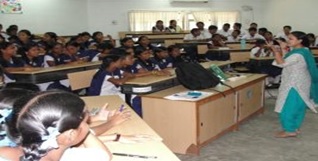13 October, 2025
Shadow Schooling
Sat 30 Aug, 2025
Context
‘Shadow schooling’ has become an expanding phenomenon in India, especially in urban areas. While it fills the gaps left by the formal school system, it simultaneously increases inequality, creates financial strain, and puts psychological pressure on students.
What is "Shadow Schooling"?
- Shadow schooling refers to the practice where students take private coaching or tutoring in addition to their formal school education. It’s called "shadow" because it mirrors the school curriculum, but is offered outside the formal education system, usually for a fee.
Key Findings from the 2025 Comprehensive Modular Survey (CMS)
- National Average: Around 27% of students take private coaching.
-
- Urban areas: 30.7%
- Rural areas: 25.5%
- Expenditure:
-
- Urban households spend ₹3,988 per child annually,
- Rural households spend ₹1,793.
- Higher Secondary Level:
-
- Urban spending ≈ ₹9,950 per student
- Rural spending ≈ ₹4,548
- Age-wise coaching cost:
-
- Pre-primary: ₹525
- Higher secondary: ₹6,384
- Funding Source:
-
- 95% of students rely on household funds,
- Only 1.2% receive government scholarships.
Interpretation of the CMS Data
- Rising Competition and concerns over school quality are pushing parents towards external support.
- Lack of personalized attention and exam preparation in schools is compensated via private tuition.
- Urban areas have more access to coaching centres and higher parental spending capacity.
Core Concerns Around Shadow Schooling
| Concern | Analysis |
| Widening educational inequality | Students from low-income households may be left behind. |
| Increased financial burden | Coaching fees are expensive and increase household education costs. |
| Mental pressure on students | Dual workload of school + coaching can lead to stress and burnout. |
| Need for policy action | There's a requirement to address quality in formal schooling to reduce dependency on coaching. |
Policy Recommendations
- Improve School Infrastructure: Better-trained teachers, inclusive learning tools, and modernized classrooms.
- Evaluate Coaching Impact: Research the long-term effects of shadow schooling on learning outcomes.
- Government Scholarships & Support: Expand scholarships, mentorship programs, and academic help for underprivileged students.
- Digital Interventions: Promote government e-learning platforms, digital tutorial libraries, and community-based academic resources.
Major Government Initiatives to Promote Formal Schooling (Tabular Format)
| Scheme / Program | Launched | Key Features / Objective |
| Sarva Shiksha Abhiyan (SSA) | 2001 | Universal primary education for children aged 6–14. |
| Rashtriya Madhyamik Shiksha Abhiyan (RMSA) | 2009 | Access and quality improvement in secondary education. |
| Samagra Shiksha Abhiyan | 2018 | Integrates SSA + RMSA + Teacher Education under one umbrella for school education. |
| Mid-Day Meal Scheme (now PM-POSHAN) | 1995 | Free nutritious lunch to students in government & aided schools. |
| Beti Bachao Beti Padhao | 2015 | Focuses on education, survival, and protection of the girl child. |
| PM SHRI Schools | 2022 | Developing model schools with modern infrastructure and pedagogy under NEP 2020. |


















